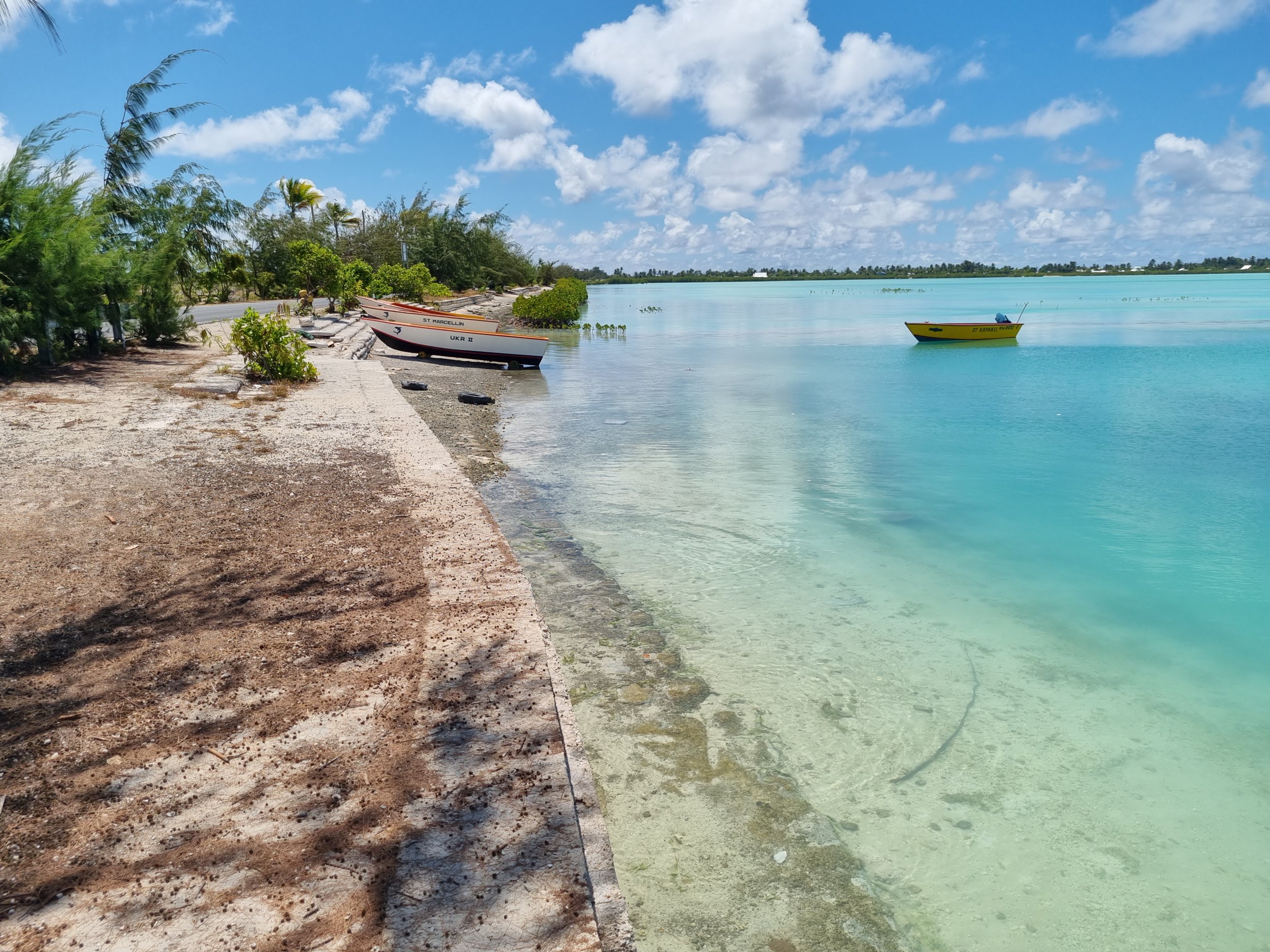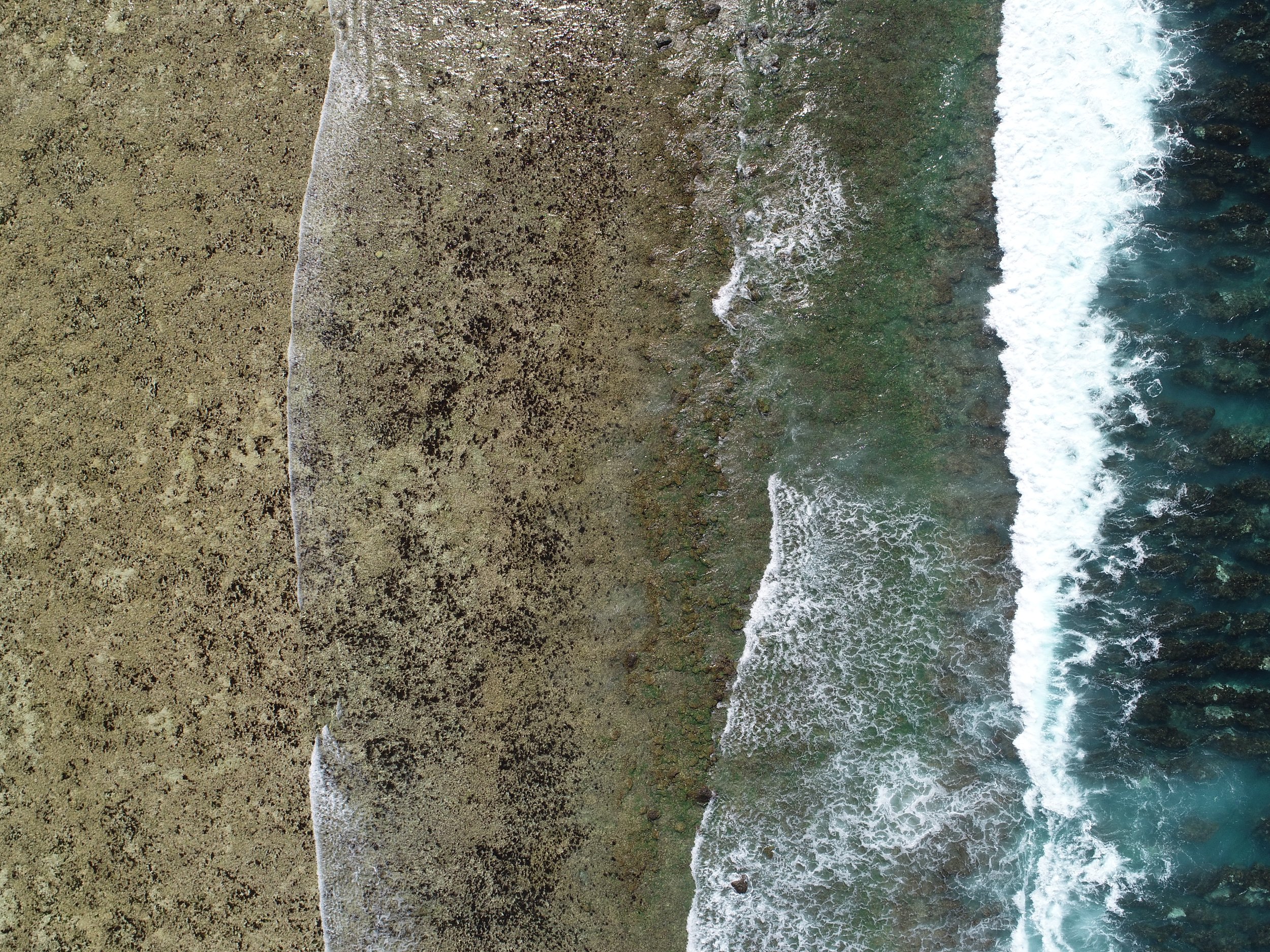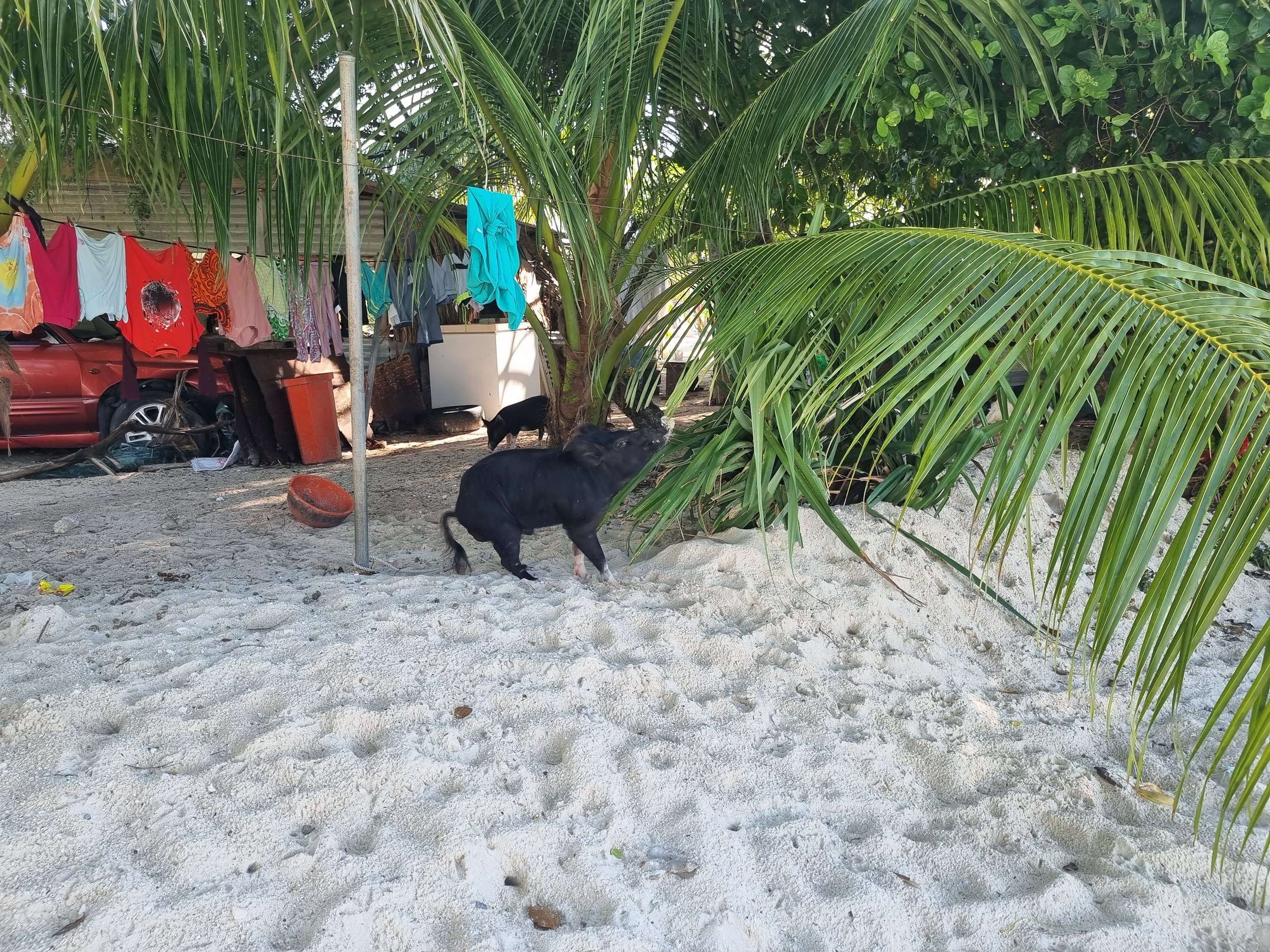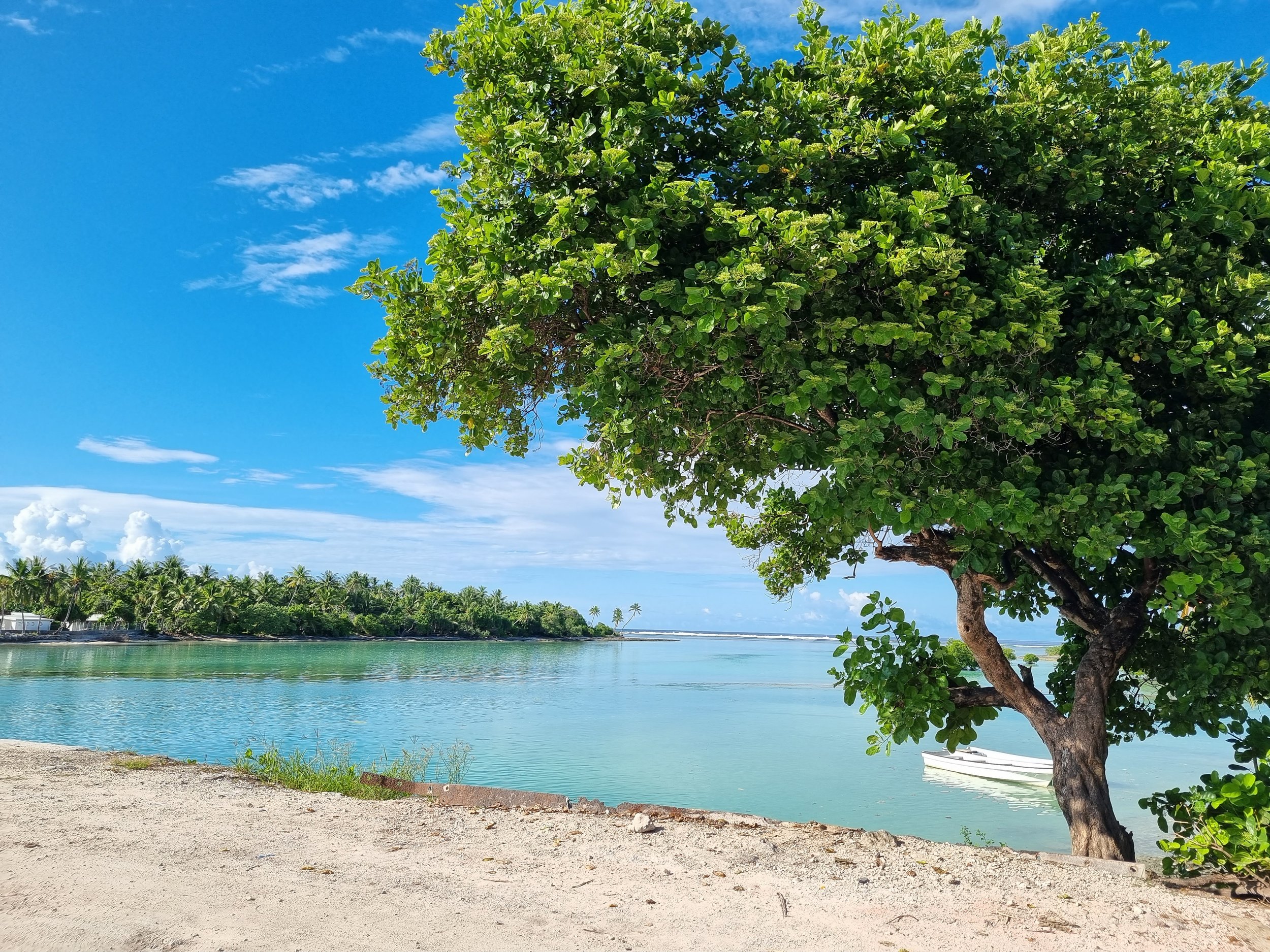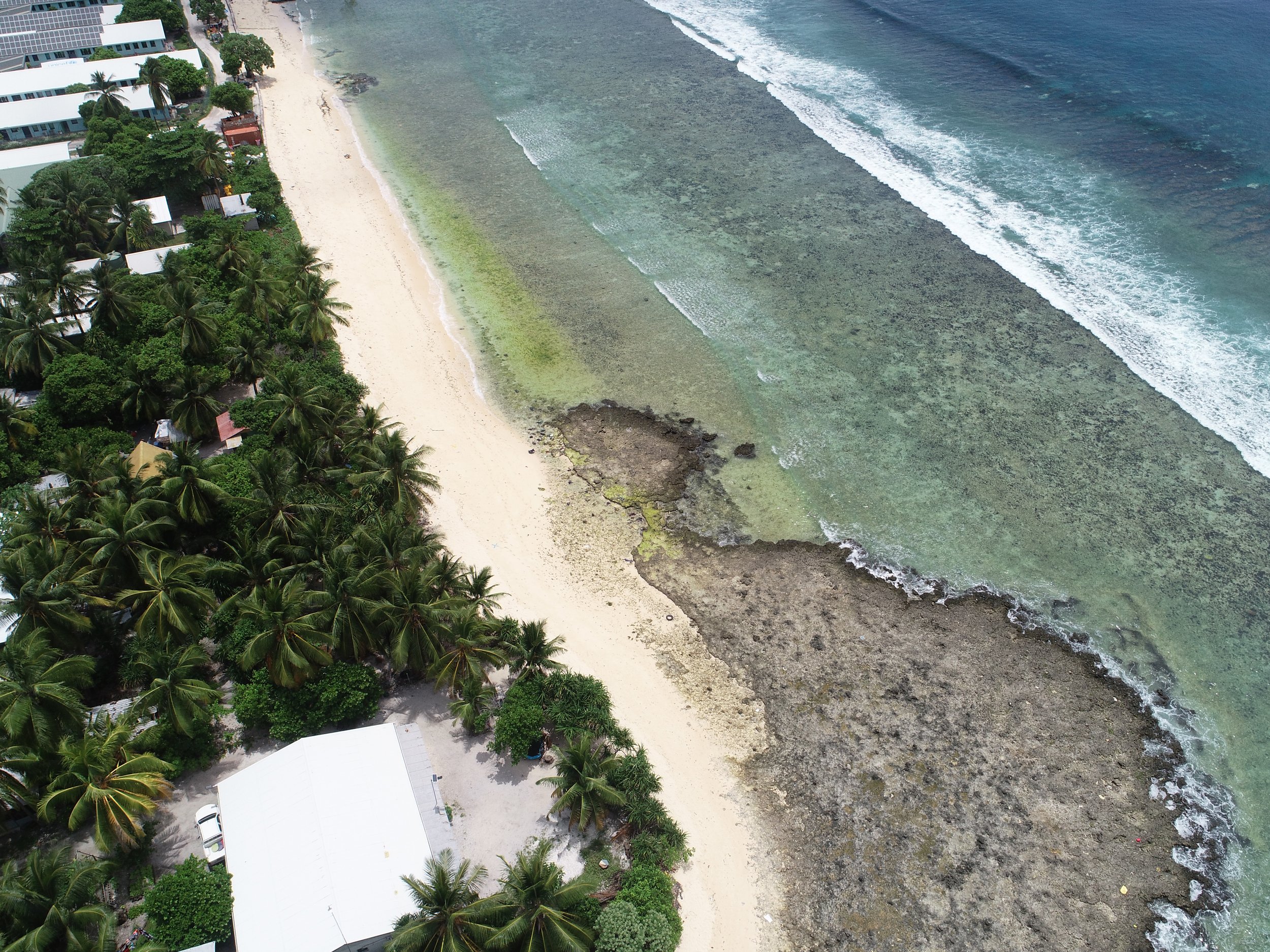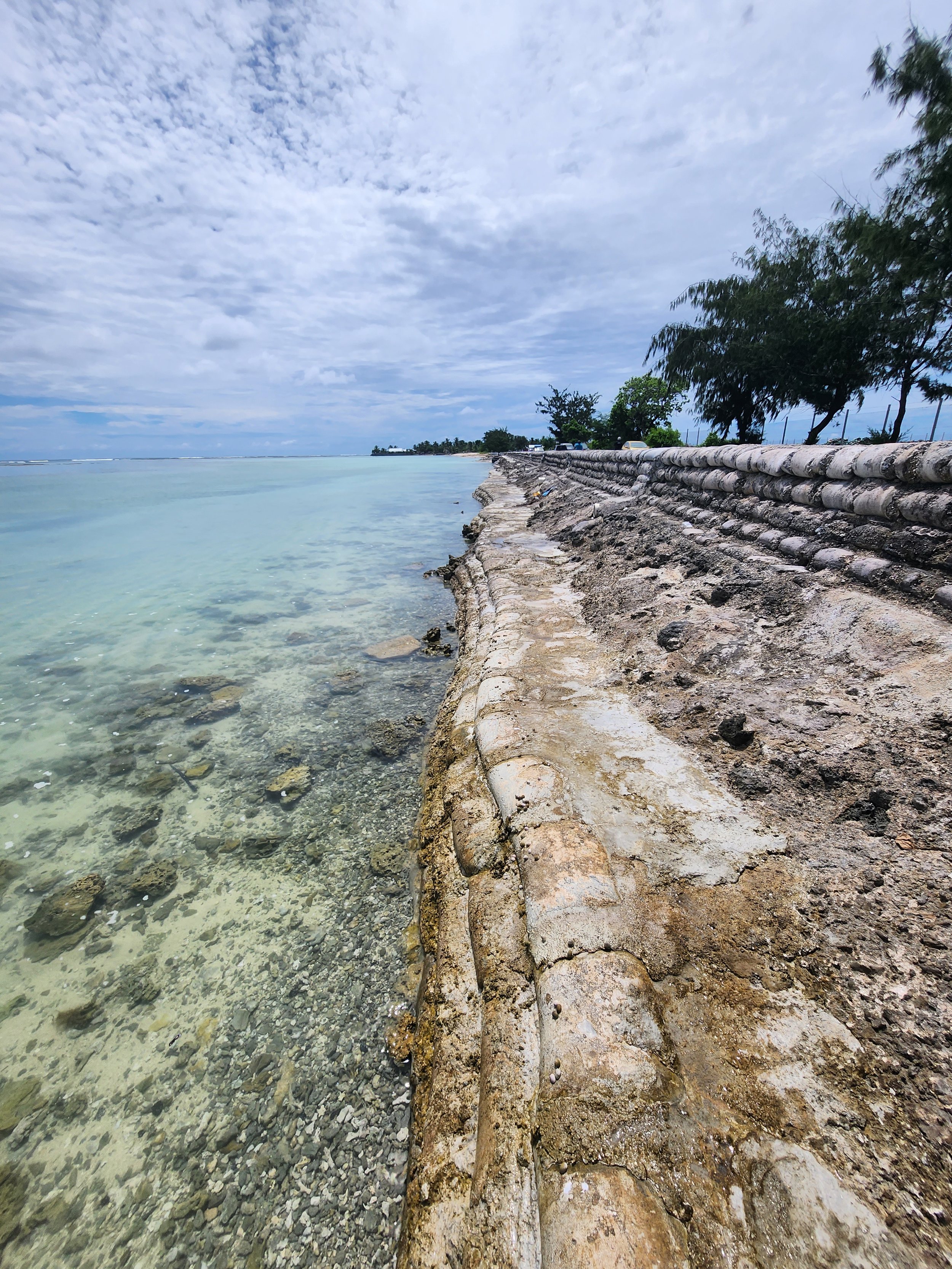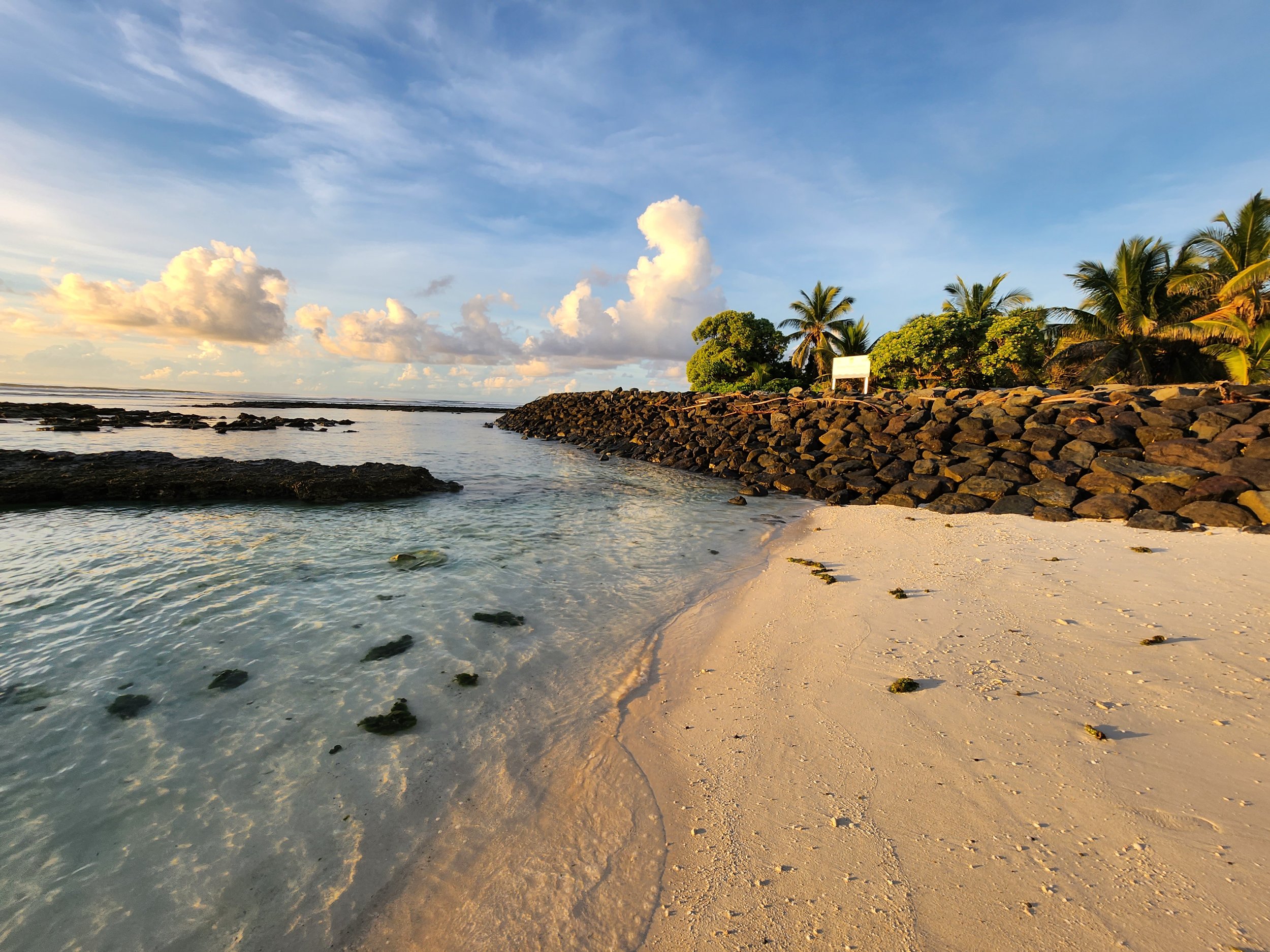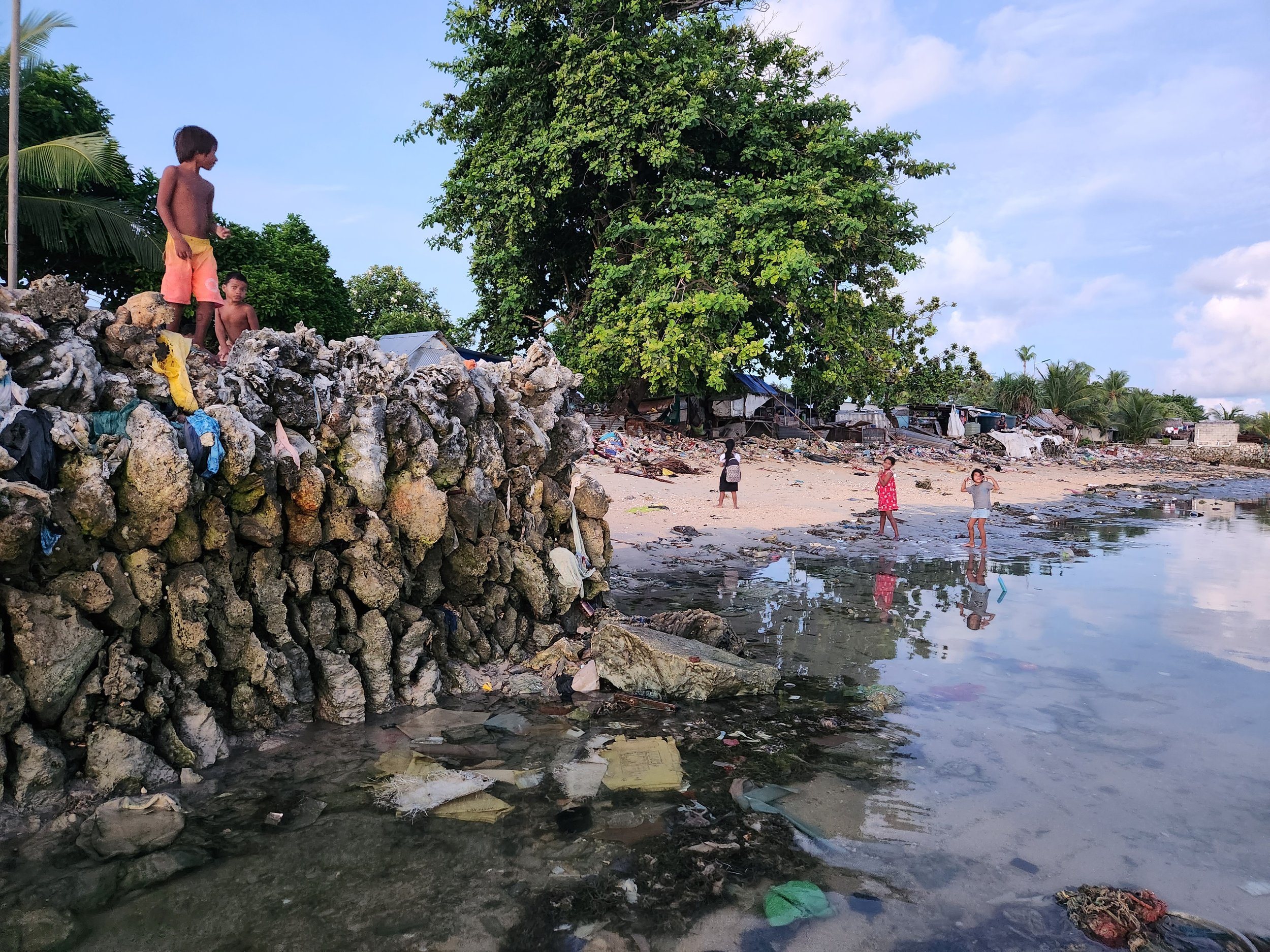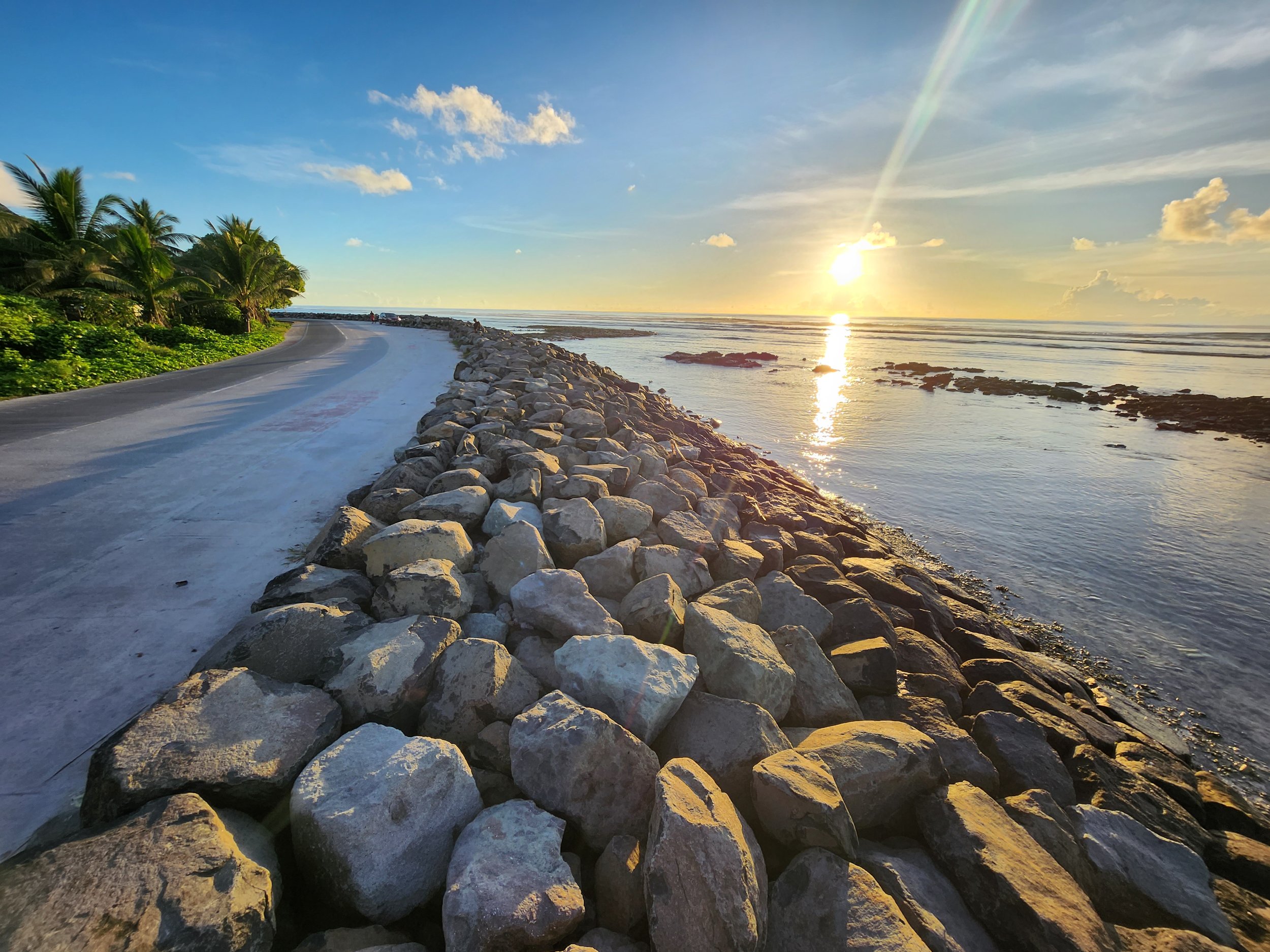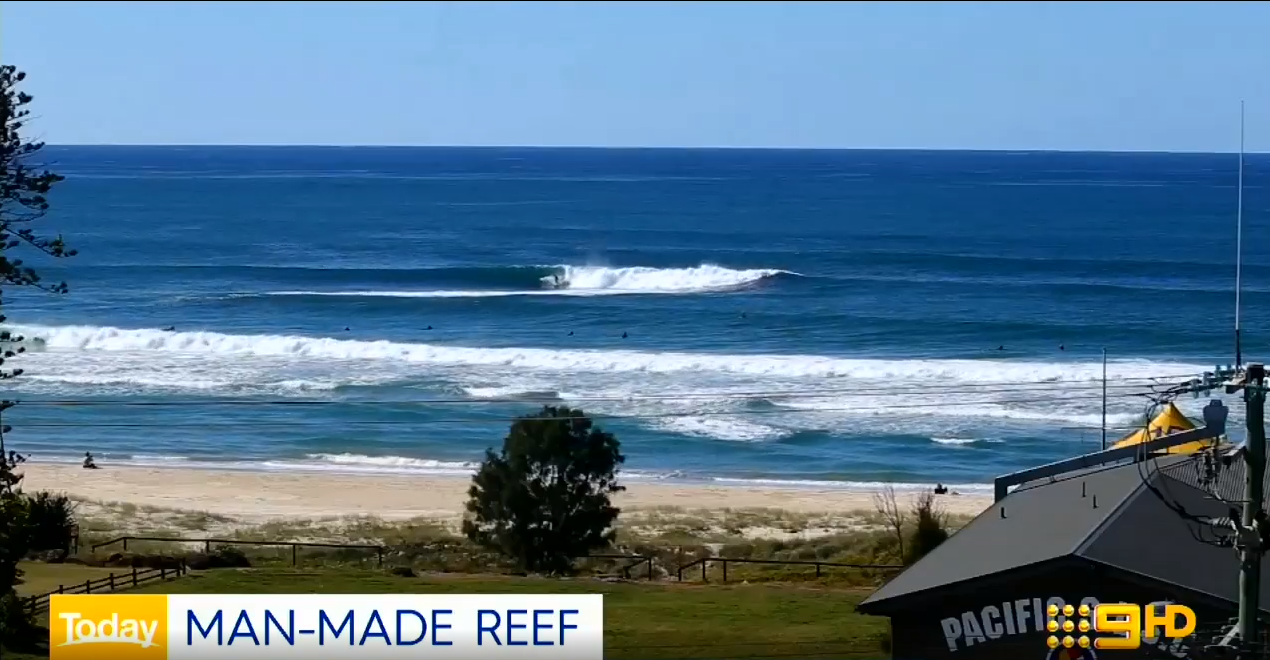Kiribati is internationally recognised as one of the world’s most vulnerable countries to the impacts of climate change. To build resilience to climate change and disaster events Bluecoast’s Evan Watterson and our colleague James Lewis have been engaged by the United Nations Office for Project Services (UNOPS) to assist DFAT and the Government of Kiribati develop a coastal protection program in Kiribati.
Evan embraced an exciting journey to South Tarawa, delving deep into the heart of Kiribati to conduct an evaluation of three vulnerable sites requiring coastal protection. Utilising their knowledge of atoll environments along with their coastal engineering skills, Evan and James crafted coastal protection options to improve the resilience of Kiribati and safeguard against the extremes of nature.
Check out the below shot of Evan and our future engineers!
For more information on the initiative check out: https://www.dfat.gov.au/about-us/publications/kiribati-australias-commitment-to-strengthening-climate-and-disaster-resilience-in-the-pacific
